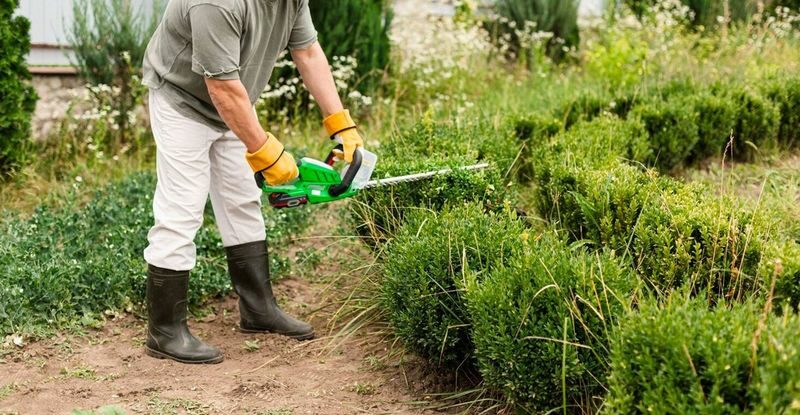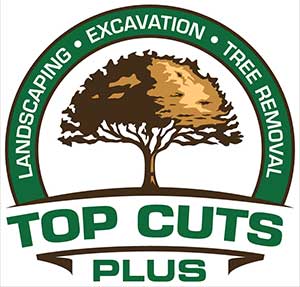All property owners want beautiful landscaping year-round, whether that means shaping their greenery in the spring or cutting branches in the fall. Unfortunately, there’s a right and wrong time to prune trees, leaving people wondering, “When is the best time to trim trees?”
Instead of pruning randomly, consider tree types, health, and location. If anything, our over ten years of industry experience at Top Cuts Tree Service & Landscaping has taught our family-owned business that you can’t be too careful with your property. Follow our guide below to understand tree trimming and when to call for assistance.

Why Should You Consider Tree Trimming?
Although trees merely go dormant during certain times, some branches don’t come back with the spring revival. If insects or animals live in or chew on branches, they’ll decay faster, drying out and turning off-colored and weak. These infestations, alongside nearby infected plants, floods, and droughts, promote diseases that require cutting damaged limbs.
Removing touching, dying, or dead branches, including branch stubs, keeps diseases from spreading. Also, your trees won’t waste energy trying to repair themselves but will use that energy to produce new, healthy growth. When buds sprout, they’ll also access rain and sunlight better with less foliage, encouraging healthy flowers, leaves, and fruit rather than mold and bacteria.
Moreover, knowing when is the best time to trim trees keeps your loved ones and property safe. If trees fall for seemingly no reason during mild weather, what’ll keep your feeble natural structures from collapsing onto your car, house, or family member? They can also fall on a neighbor’s property or passerby, resulting in a lawsuit, which you can avoid with regular tree trimmings.
During What Time of the Year Do You Need a Tree Trim Service?
Whether you need a tree trim service to keep your greenery healthy and surroundings safe or to raise your property value and curb appeal with better aesthetics, know the best time. For instance, if lush nearby foliage envelops your trees, wait until the fall when they die before tending to the trees for easier access.
Fall and winter also make the best time to trim trees, especially from November to March, because most trees and shrubs go into dormancy. They become easier to handle, making labor costs cheaper, and they have a lower risk of infestations and diseases targeting new wounds. The wounds also heal faster, coming to life with new spring blooming.
Late winter or early spring prune keeps the wounds exposed to the elements for as little time as possible before new blooms arise on the following trees:
- Oak trees
- Apple trees
- Honey locusts
- Pine trees
- Spruces
- Cedar trees
- Firs

However, flowering shrubs, hedges, and evergreens that bloom early last most of the year, or have unusual growth habits have different care requirements. For instance, you can also trim oak trees during the late fall, along with spruces, firs, and cedar trees. However, arborvitae, junipers, yews, birches, butternut, walnut, and maple trees need late spring and early summer trimmings.
What Are Some Common Pruning Methods?
Like pruning times, pruning methods vary according to your tree’s needs and desired appearance. Some popular options when you want to schedule a pruning time for your trees include the following.
Crown Thinning
Crown thinning removes no more than 20% of the tree’s crown, lessening the density by eliminating weak and healthy branches. Cut branches up to four inches thick on large trees and limbs ¼- to ½-inches in diameter on shrubs and ornamental fruit trees, increasing air circulation and sun filtration.
Crown Raising
Crown raising requires trimming low-hanging branches, giving the illusion of a perkier tree. It also brings them above fences and houses, creating a better view. However, don’t trim branches four inches or more in diameter or take off too much at once since a crown that makes up less than 60% of the tree causes overall weakness.
Crown Reduction
Crown reduction is necessary for older trees as the crown becomes overgrown and dense. The process thins and shapes the tree while ridding it of dry and dying leaves and boughs.
Tree Trimming Near Me
When you need “tree trimming near me,” you need a fully licensed and insured team of experts who specialize in protecting and beautifying your property.
Top Cuts Tree Service & Landscaping knows the best time to trim trees and how to prune according to the environment and tree condition. For residential and commercial greenery solutions in Calvert County and surrounding Southern Maryland, call 443-975-4810 for a free estimate today!
